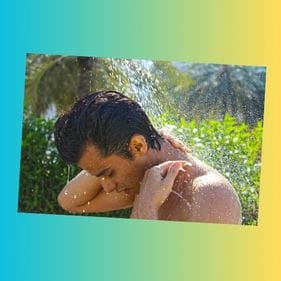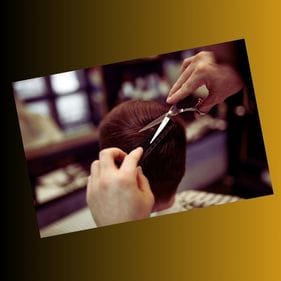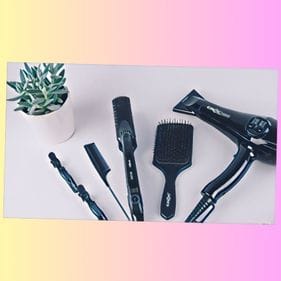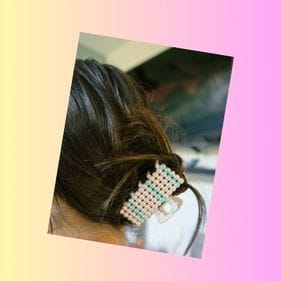Caring for your hair is a crucial aspect of maintaining both your personal appearance and overall health.
With a myriad of products, treatments, and advice available, it can be overwhelming to determine the best practices for hair care.
This comprehensive guide will walk you through the most effective strategies to keep your hair looking its best.
Key Takeaways:
- Understand the importance of a balanced diet and hydration for hair health.
- Learn about the right hair care products and techniques for your hair type.
- Discover how to protect your hair from damage and maintain its natural vitality.
Understanding Your Hair Type
Before diving into hair care routines, it's essential to understand your hair type. Hair can be classified into four main types:
- straight,
- wavy,
- curly, and
- kinky.
Each type has subcategories based on the hair's porosity, density, and texture.
Knowing your hair type will guide you in choosing the right products and care methods.
*For instance, curly hair often requires more moisture than straight hair, while fine hair may need lightweight formulas to avoid being weighed down.
The Role of Diet and Hydration
Your hair's health starts from the inside out.
A balanced diet rich in vitamins and minerals, such as vitamin E, iron, and omega-3 fatty acids, can significantly improve hair strength and shine. Foods like salmon, avocados, nuts, and leafy greens are excellent for hair health.
Additionally, staying hydrated by drinking plenty of water is just as important for your hair as it is for your body, as it helps to maintain the hair's moisture balance and elasticity.
Shampooing and Conditioning Correctly
Choosing the right shampoo and conditioner is pivotal for maintaining healthy hair. Look for products that match your hair type and address specific concerns like dandruff, oiliness, or color protection.

When shampooing, concentrate on cleansing the scalp rather than the hair lengths to avoid stripping away natural oils.
Conditioning, on the other hand, should be focused on the mid-lengths to ends of your hair to nourish and detangle without causing buildup on the scalp.
The Importance of Regular Trimming
Regular trims are essential to prevent split ends and promote healthy hair growth. Even if you're growing your hair out, snipping off the ends every 6-8 weeks can prevent damage from traveling up the hair shaft.

*This practice not only keeps your hair looking neat but also reduces the chance of breakage and thinning.
Heat Styling with Care
Heat styling tools like straighteners, curling irons, and blow dryers can cause significant damage to your hair if used excessively or improperly.

To protect your hair, always use a heat protectant spray before styling and opt for the lowest heat setting that is effective for your hair type.
*Try to limit the use of these tools and embrace your hair's natural texture whenever possible.
Deep Conditioning Treatments
Incorporating deep conditioning treatments into your hair care routine can provide an extra boost of hydration and repair. These treatments are especially beneficial for those with dry, damaged, or chemically treated hair.
*Use a deep conditioner or hair mask once a week, leaving it on for the recommended time before rinsing thoroughly.
Protecting Hair from Environmental Damage
Environmental factors such as sun exposure, pollution, and chlorine can take a toll on your hair. Protect your hair by wearing a hat or using hair products with UV filters when spending time outdoors.

*Additionally, before swimming in a pool or the ocean, wet your hair with clean water and apply a leave-in conditioner to create a barrier against chlorine and saltwater.
Choosing the Right Hair Accessories
Not all hair accessories are created equal. Some can cause breakage or stress to your hair.

Opt for seamless hair ties, clips without metal parts, and gentle hairbands to minimize damage.
*Be careful not to pull your hair too tightly when styling, as this can lead to hair loss over time, particularly around the hairline.
The Benefits of Natural Hair Oils
Natural hair oils like coconut, argan, and jojoba can be excellent for hair care. They provide moisture, reduce frizz, and can even promote scalp health. However, the key is to use them sparingly, as too much oil can weigh down your hair and make it look greasy.
*Apply a small amount to the ends of your hair or use it as a pre-shampoo treatment for a nourishing effect.
Developing a Nighttime Hair Care Routine
Your hair care shouldn't stop when you go to bed.
- Switch to a silk or satin pillowcase to reduce friction and prevent breakage while you sleep.
- If you have long hair, consider loosely braiding it or tying it up to prevent tangles.

*A nighttime routine can help maintain your hair's health and make your morning styling much easier.
Summary
Caring for your hair involves understanding your hair type, maintaining a healthy diet, using the right products, and protecting your hair from damage.
Regular trims, careful heat styling, deep conditioning treatments, and the use of natural oils can all contribute to the vitality of your hair. Remember to be gentle with your hair, from the accessories you choose to the way you handle it at night.
*By following these best practices, you can keep your hair looking and feeling its best.
FAQ Section
Q: How often should I wash my hair?
A: The frequency of hair washing depends on your hair type and lifestyle.
Generally, oily hair may require more frequent washing, while dry or curly hair may benefit from less frequent shampooing. Listen to your hair's needs and adjust accordingly.
Q: Can diet really affect my hair's health?
A: Absolutely.
A diet lacking in essential nutrients can lead to hair loss, dullness, and weakened strands. Incorporating a variety of vitamins and minerals through a balanced diet can significantly improve your hair's health.
Q: Is it necessary to use a heat protectant before styling?
A: Yes, using a heat protectant can shield your hair from the high temperatures of styling tools, reducing the risk of damage, dryness, and breakage. It's an essential step in any heat styling routine.








